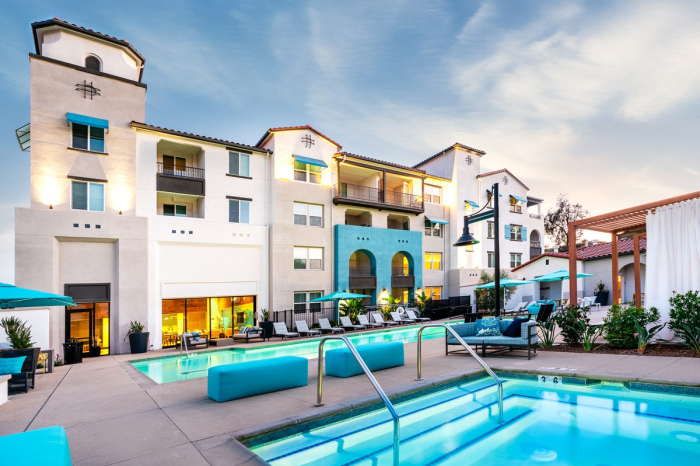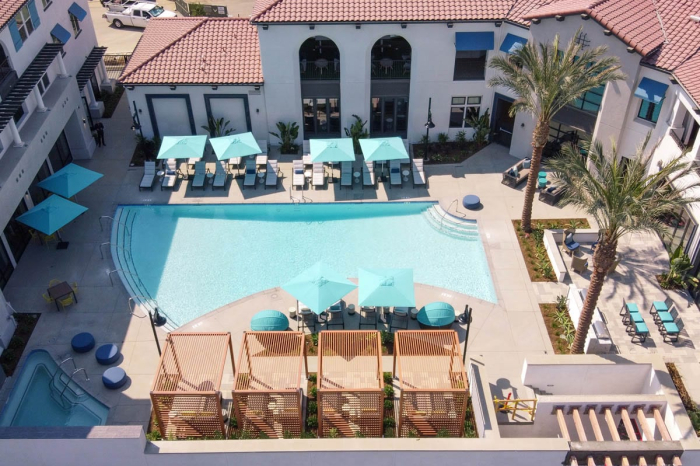Alternative investments
Korean Tiger Alternative, NH Investment buy California homes
Rents of the Monterey are expected to rise 4% every year with 97% of the multifamily homes leased out
By Sep 27, 2021 (Gmt+09:00)
3
Min read
Most Read
LG Chem to sell water filter business to Glenwood PE for $692 million


Kyobo Life poised to buy Japan’s SBI Group-owned savings bank


KT&G eyes overseas M&A after rejecting activist fund's offer


StockX in merger talks with Naver’s online reseller Kream


Mirae Asset to be named Korea Post’s core real estate fund operator



South Korea’s Tiger Alternative Investors Co. Ltd. and NH Investment & Securities bought multifamily homes in California for $220 million amid growing demand among investors in the Asian country for such US residential properties.
Tiger Alternative and NH Investment acquired the Monterey located in the Inland Empire community of Corona, CA, including the whole 442 homes and community facilities, according to South Korean investment banking industry sources on Sept. 27.
They spent $84.3 million for the property completed last month with a plan to raise the rest through loans. They expect to earn between 7.0% and 7.5% return from the investment.
Tiger Alternative was responsible for the purchase and management of the asset, while NH Investment gathered investors and worked on the loans.
“Demand for new homes and community facilities is strong in the Inland Empire area including the city of Corona since most multifamily homes were built in 1980-1990,” said a Tiger Alternative source. “Lease demand is to be sustained in the next five to six years, given no development plan for new multifamily homes there.”
EMERGING ALTERNATIVE RESIDENTIAL AREA IN CALIFORNIA
The Inland Empire includes the cities of western Riverside County and southwestern San Bernardino County with a population of 4.5 million. The region in Southern California emerged as an alternative residential area as housing prices in the neighboring Los Angeles and Orange County surged to record levels. Population in the Inland Empire is also growing thanks to relatively lower home prices and exodus from downtowns due to the COVID-19.
Rents in the area jumped 12% last year despite the pandemic with about 98% of multifamily homes leased out there, according to Tiger Alternative.
Some 97% of the Monterey was known to have already found tenants before its completion. Its rents are expected to rise 4% every year, given strong residential demand there.
The purchase of the Monterey is Tiger Alternative’s fourth investment in overseas multifamily homes. The fund, which overseas $4.9 billion assets under management (AUM), has been building up networks in the US markets with investments in multifamily homes in Texas, Florida and Michigan since 2018.
Tiger Alternative was known to have held private talks with the seller for the Monterey long before its completion.
“It is not easy even for local companies to buy multifamily homes made public due to cut-throat competitions,” said the Tiger Alternative source. “Given our performances accumulated in the US, the developer proposed relatively attractive condition to build a mid- to long-term partnership.”

South Korea’s institutional investors, along with their global peers, have been keeping an eye on overseas multifamily homes since the properties offer more stable returns than office buildings and retail facilities due to lower sensitivity to the overall economy. In addition, the recent surge in the global real estate prices provides further profits.
Local investors could not secure many deals since it usually took relatively long time on due diligence and decision making. Some asset management companies were understood to have made on-site visits to invest in multifamily homes, but failed to buy the assets.
“Several asset managers went on business trips to invest in US and European multifamily homes in the second half, but few of them succeeded,” said an asset management company source.
Write to A-Young Yoon at youngmoney@hankyung.com
Jongwoo Cheon edited this article.
More to Read
-
 Tiger Alternative to offer $167 mn debt financing to US PEF
Tiger Alternative to offer $167 mn debt financing to US PEFOct 30, 2019 (Gmt+09:00)
1 Min read -
 Tiger Alternative raises $100 million to invest in US structured fund
Tiger Alternative raises $100 million to invest in US structured fundJul 02, 2020 (Gmt+09:00)
2 Min read -
 Tiger Alternative near closing $247 mn Home Depot logistics center deal: report
Tiger Alternative near closing $247 mn Home Depot logistics center deal: reportAug 11, 2020 (Gmt+09:00)
1 Min read
Comment 0
LOG IN


